Wednesday, September 25thThe day was dedicated to the visit of Sydney. We took the public transports to go to the town center. We visited the inescapable Royal Botanic Garden, the Sydney Opera, Rocks Square, the Sydney Tower without forgetting few churches and cathedrals. We ended by the aquarium which had the advantage to close its doors after 9:00 pm. It was our first and last observation of the Platypus. It was a rather tiring day! Thursday, September 26thThere were so many places to visit around Sydney that the choice was not really easy. Finally we opted for the Capertee Valley. It was about 300 kilometres North-West of Sydney and it was considered as one of the most interesting site for the ornithology. The variety of bird was significant. We had planned to arrive at the end of the day after the crossing of the Blue Mountains, one of the most tourist wild sites of Australia. We spent a part of the morning to go out of the suburb of Sydney. Our first stop was at the Wentworth Falls at the beginning of the Blue Mountains. After few minutes of walk, we had a beautiful point of view on it and on the massif. that was a beautiful forest which extended between cliffs more unbridgeable the one than the others. The name Blue Mountains was connected to the vapors gave out by Eucalyptus Trees. When the weather was beautiful, these vapors gave a slightly bluish tint to the atmosphere. On the road, there was regularly points of view: Sublime Point, Honeymoon Lookout, Echo Point... The last one offered the famous sight of the Three Sisters. It was the most tourist place althouth it was not necessarily the most spectacular for me. There was even a visitor centers. We saw rather common birds: White-browed Scrubwren, Crimson Rosella, Red Wattlebird, Golden Whistler. All the same, I perceived during few second a female of Bird Lyre : a was little bit frustrating. The most remarkable sight was a female of Satin Bowerbird who collected twig to build its nest. The female has a discreet green coloring with a blue eye of the most beautiful effect. The male was completely dark blue but we had to wait for Melbourne to see one. The both sites we visited was much less tourist but so magnificent: Pulpit Rock and Perry's Lookdown. We added in our bird's list the Gang-gang Cockatoo and the Spotted Pardalote. This last one passed quietly of branches in branches only few meters from us. The end of the day approaching very fast, it was necessary for us to make the road for arriving before the night. We stopped shortly for an Emu and for a beautiful group of Eastern Gray Kangourou. When we arrived at Capertee, we phoned to a guest house at Glen Davis to reserve. Once reassured, we had a lunch at the service station: probably the best hamburger which it was given to me to swallow! For the anecdote we found a video cassette of the french film Amelie Poulain.... We had to make about twenty kilometers at night, very slowly, to avoid any risks of collision with Kangarooes... We were settled in a small house: a true paradise and we regretted at once not staying more than one night. Moreover, the day ended with an excellent surprise. Having stood out to get back cases in the car, I heard something who took refuge under the house. I returned in the house to take the lamp and to call Valérie. We falled flat on the ground and then we were able to admire at leisure a Wombat: a sort of small bear with pig's nose.... Friday, September 27thIn fact, We were settled in a farm of 800 hectares essentially dedicated to the breeding of the cattle. We had a lot of trails around us before going out of the property. The variety of birds was really impressive. In the morning, we saw more than twenty new species. For some we never revised them somewhere else: Fuscous and Striped Honeyeater, Grey Goshawk, Brown Treecreeper, White-browed Babbler, Southern Whiteface... Of course, I completed my bag with some new beautiful pictures: Dusky Woodswallow, Red-rumped Parrot, White-faced Heron. After the lunch, the rain began falling and we left the farm with an unexpected spectacle offered itself to us: between 200 and 300 Sulphur-crested Cockatoo were concentrated to eat on the ground... A little farther, we fell on a small group of females and immatures of Australian King-Parrot. We reluctantly left this site to return to Wollongong. Indeed, all our trip was organized with regard to the next day: the pelagic trip... Saturday, September 28thWe embarked at about 8:30 am on the boat. On the contrary of the South Africa pelagic trip we also made in september 2001, bait were used here to attract the birds. It was a sort of hatched meat not very tasty, but it seemed please the birds. The Australian Gulls were already around this mixture and tried to steal some crumbs.... After few minutes of navigation, we met a cloud of Wedge-tailed Shearwaters and Fluttering Shearwaters. In fact, we crossed a big group of hundred birds. Some of them decided to fellow us to take advantage of the meal put for us. We went away slowly from the coast with, behind the boat, a small group of Wedge-tailed Shearwaters and Great Crested-Terns which threw some to the other every time a package of meat was given. We also perceived some Australasian Gannets and two Kelp Gulls. The beginning of the cruise was also the occasion to cross a half-dozen of common Dolphins which came to surf in front of the vessel. In the same time, it was Humpack Whale who attracted us and three Australian Fur-Seal: It was difficult to know where to watch ! The number of Shearwaters behind the boat increased regularly and some new species appeared: Short-tailed Shearwater, Flesh-footed Shearwater, Brown Skua and soon the first Albatross and Giant-Petrels. When the number of birds became self-important, a new activity began: the catching and the ringing of Wedge-tailed Shearwaters! The bird was captured with a landing net! There was no risk for birds regarding to the great experience of the ringer. When a bird approached enough from the boat, he catched the bird from behind and then brought it on board to be ringed, weighed and measured. Every time a piece of meat was sent, dozens birds threw themselves into the water to get back the crumbs which scattered. there were a mix of Albatross and Shearwater. Every birds had a chance... Some arised and pecked on the water, some others prefered to dive. The big species were more and more numerous in particular the Wandering Albatross which I looked forward impatiently. We saw 6 species and sub-species of Albatross. We made very beautiful observations of Campbell Albatross and Yellow-nosed Albatross. Concerning the Wandering Albatross several were ringing on the boat. Of course this birds could not be catch in flight. In fact, they only put the landing net on birds when it lay on the water near the boat for eating! Don't miss the pictures of this species: one is put on the knees of the ringer which allows to realize its size: it is really impressive! To be complete, we also saw some Great-winged Petrels and Providence Petrels, one Prion sp and one White-fronted Tern. When we arrived in the harbour, an Australian Pelican flew near the boat a moment. that was really unforgettable cruise. If you want to know more about theses cruises and ringing Albatross, visit the site of the association which organizes all this: www.sossa-international.org. The ocean was not really quiet and we ended the day with a good collation near the harbour. After that, we returned to the campsite where we made a small walk on the beach before the dinner. Sunday, September 29thFew kilometers from Wollongong was a renowned birds sanctuary: Barren Grounds Birds Observatory. it was situated in the heights which dominated the city. The road which led to it was as like as our small mountain roads in France. Points of view were rather nice and we made interesting observations: a female of Satin Bowerbird and our first Noisy Friarbird. We stopped at the entrance of the reserve and we began a walk on a track still took by cars. In fact, the main parking was a little farther. A buckle allowed to make a stroll of about 5 or 6 kilometers . The site was pleasant but the wind was strong. That was not of very good fortune-teller for birds. We did not see big things indeed: a very beautiful Fan-tailed Cuckoo, several White-throated Treecreepers and many New Holland Honeyeaters and Brown Thornbills. We had a furtive vision of a small snake which seemed to us quite black like the one photographed at Cairns but very much smaller. On the return, we also made very beautiful observations of Superb Fairywren and Pied Currawong. One of them watched us during all our lunch... We took the road again to Sydney. At the end of afternoon, we crossed the Royal N.P. The ocean were more agitated than yesterday. A White-bellied Sea-Eagle went away. We regrettably had no time to visit this park. Tomorrow morning we took the plane for our last stage: Melbourne. |
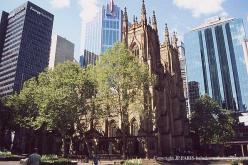 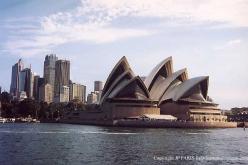 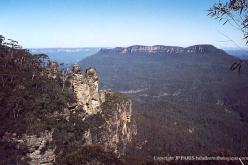 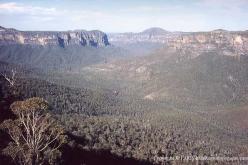 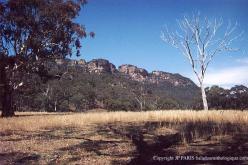   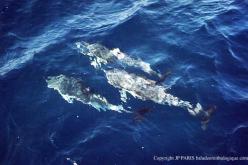 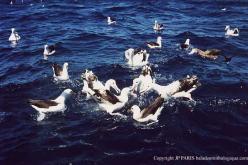 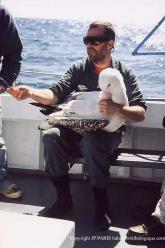 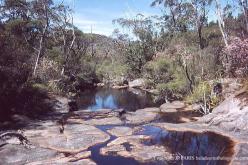  |